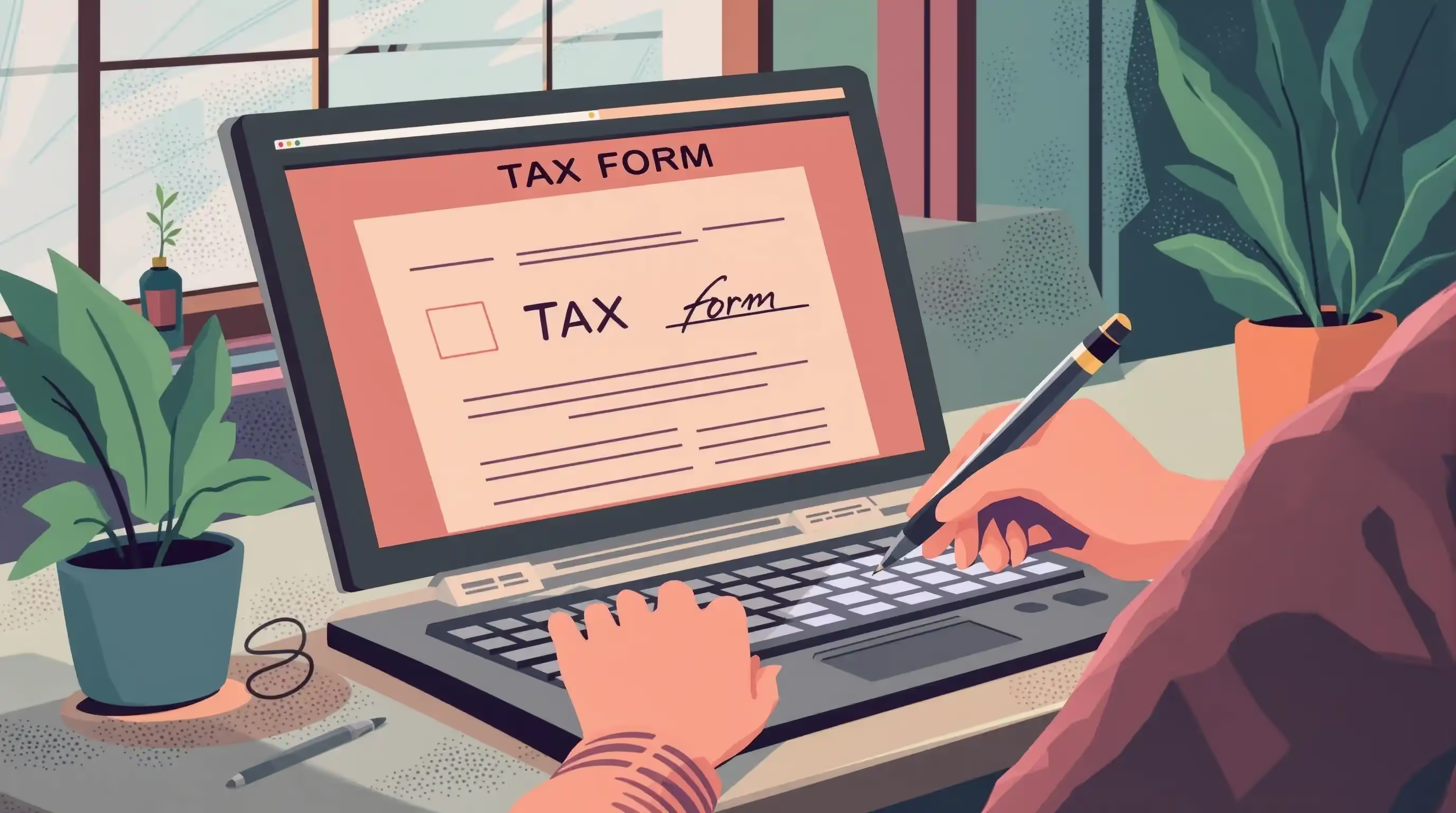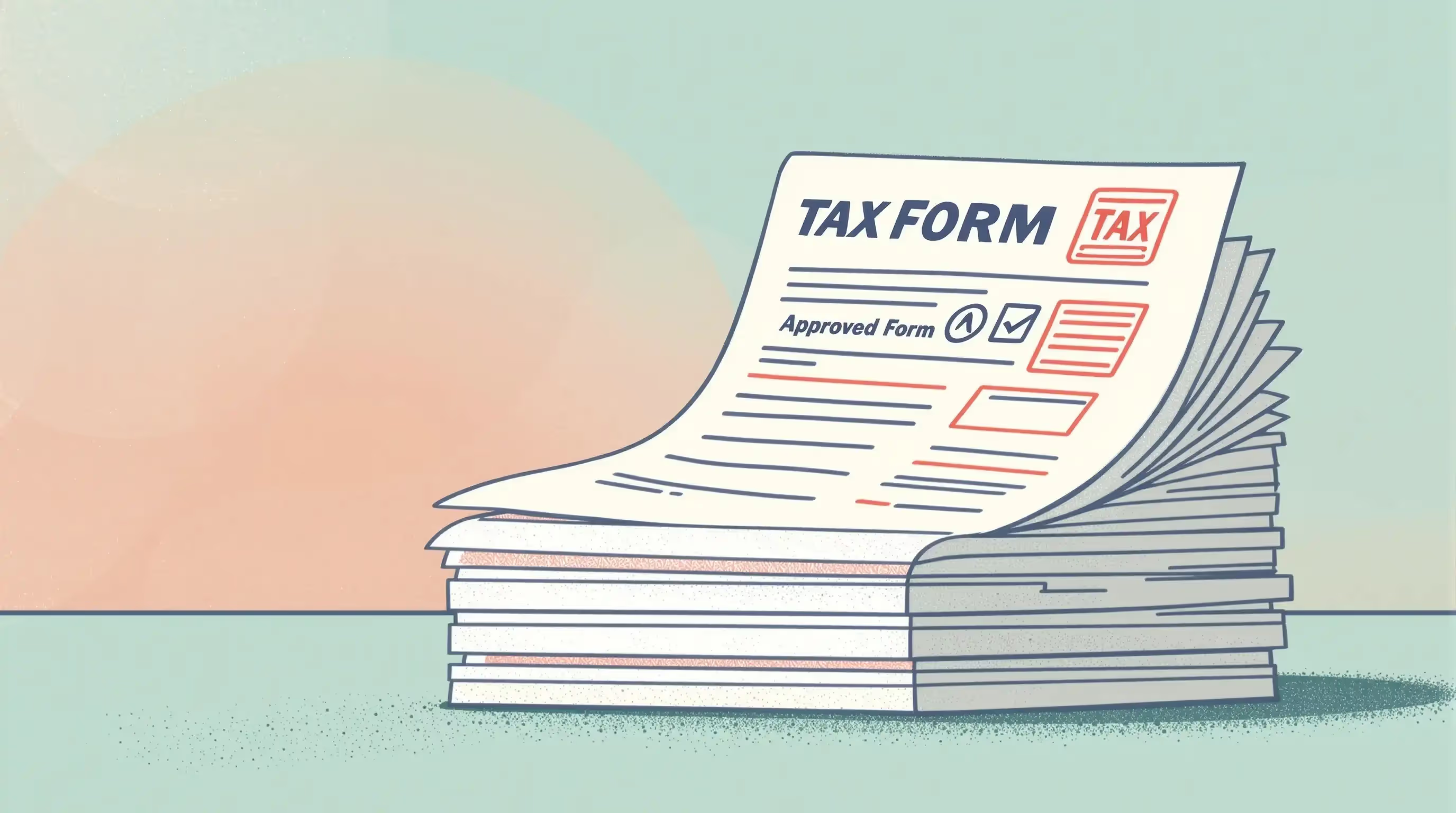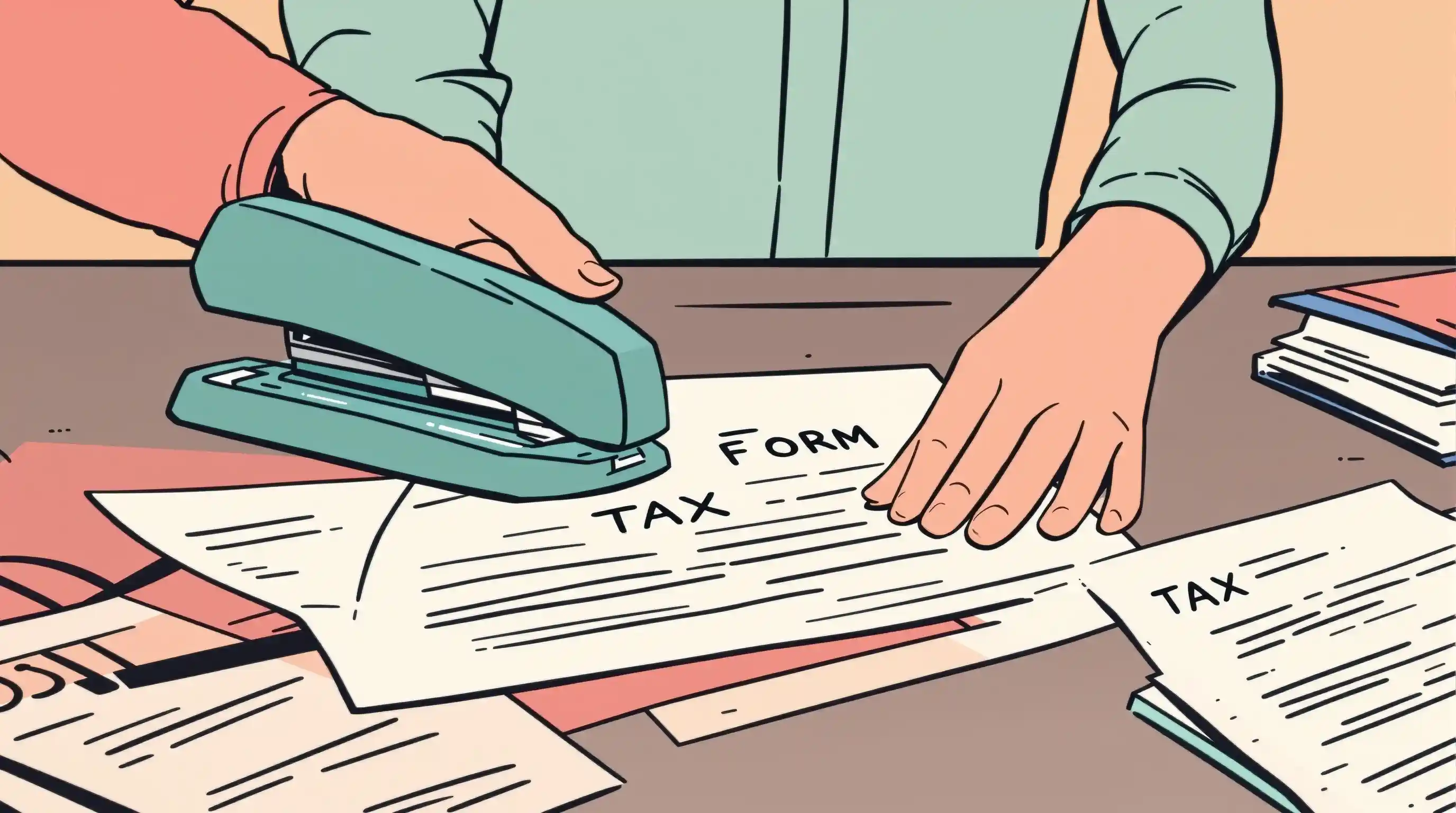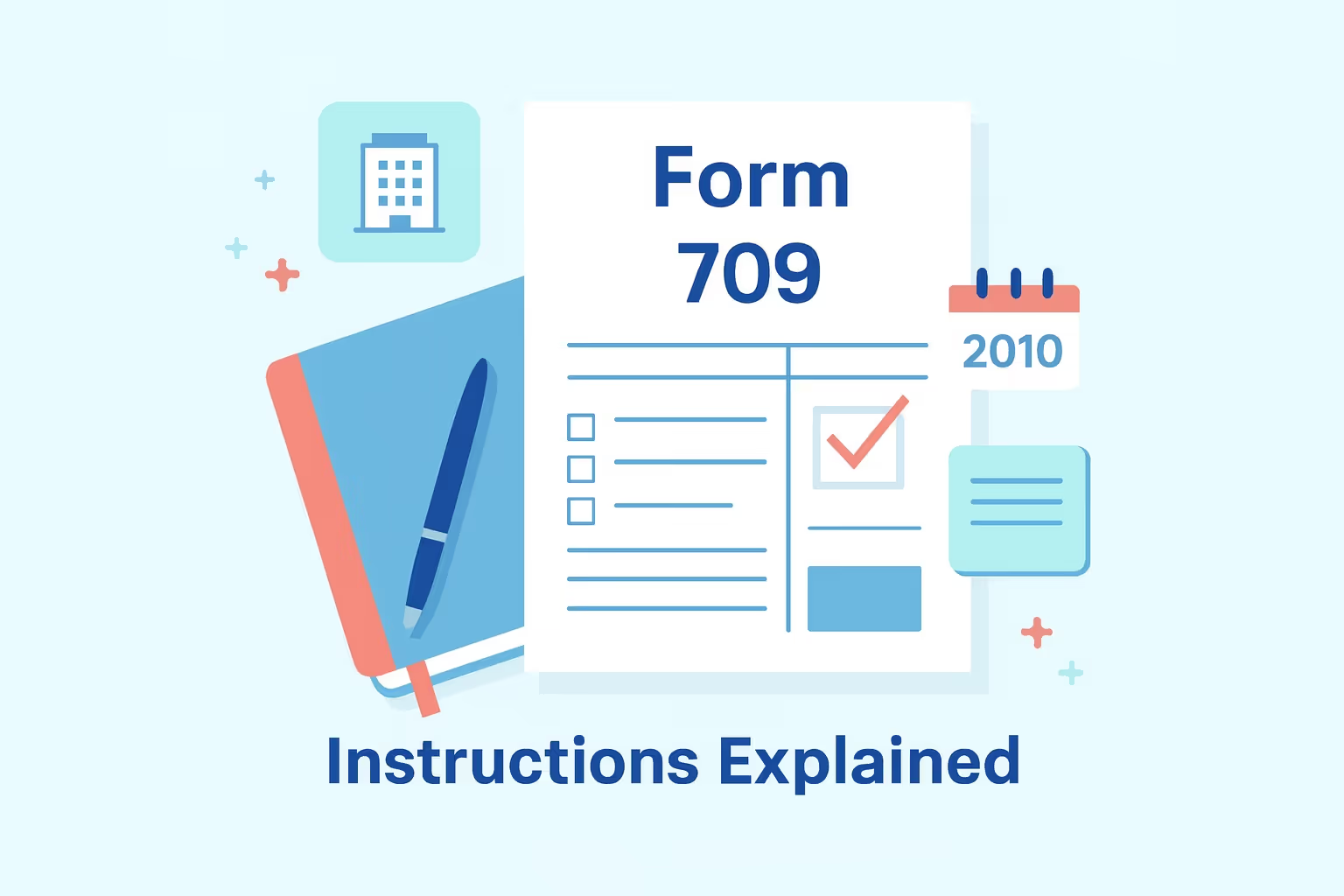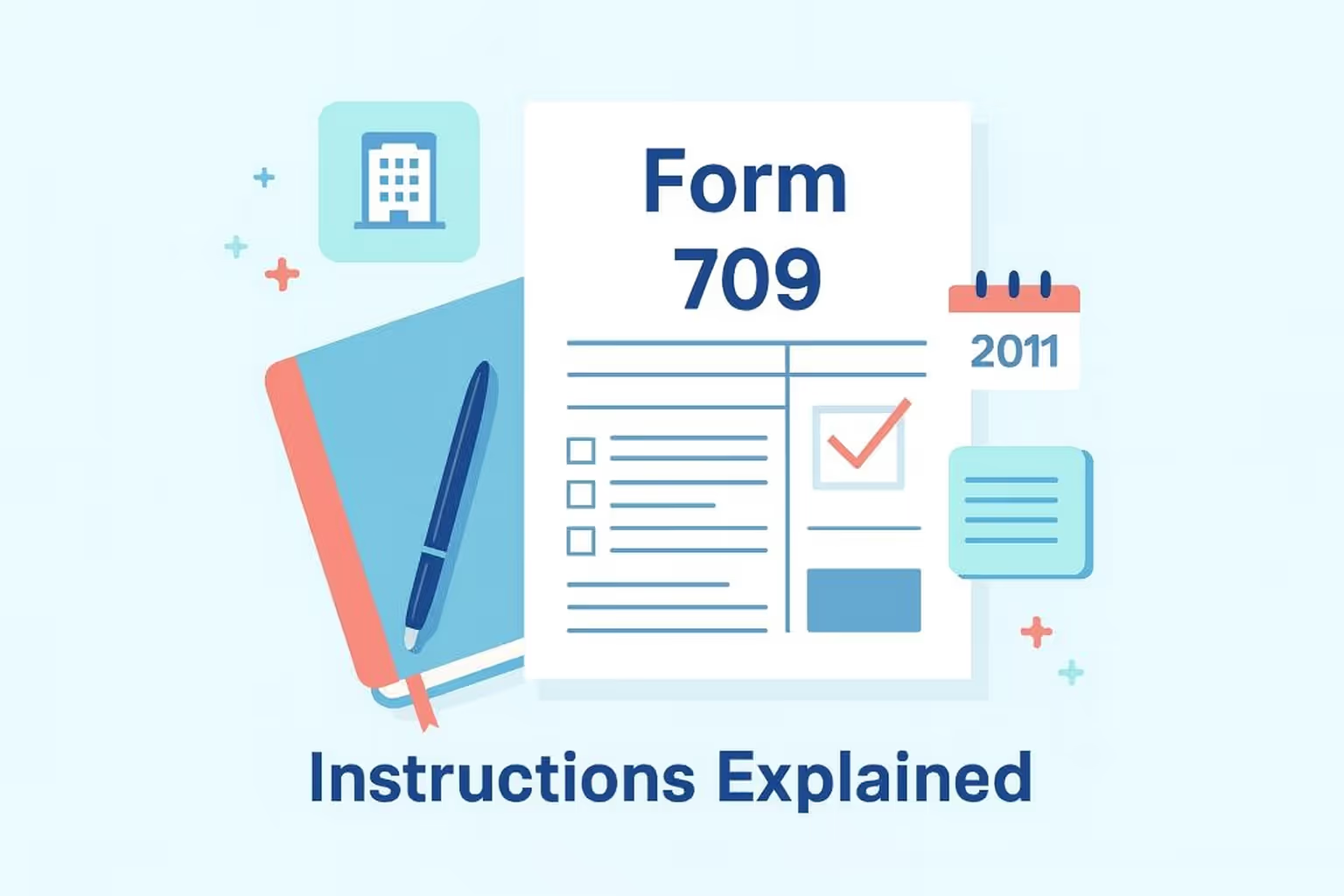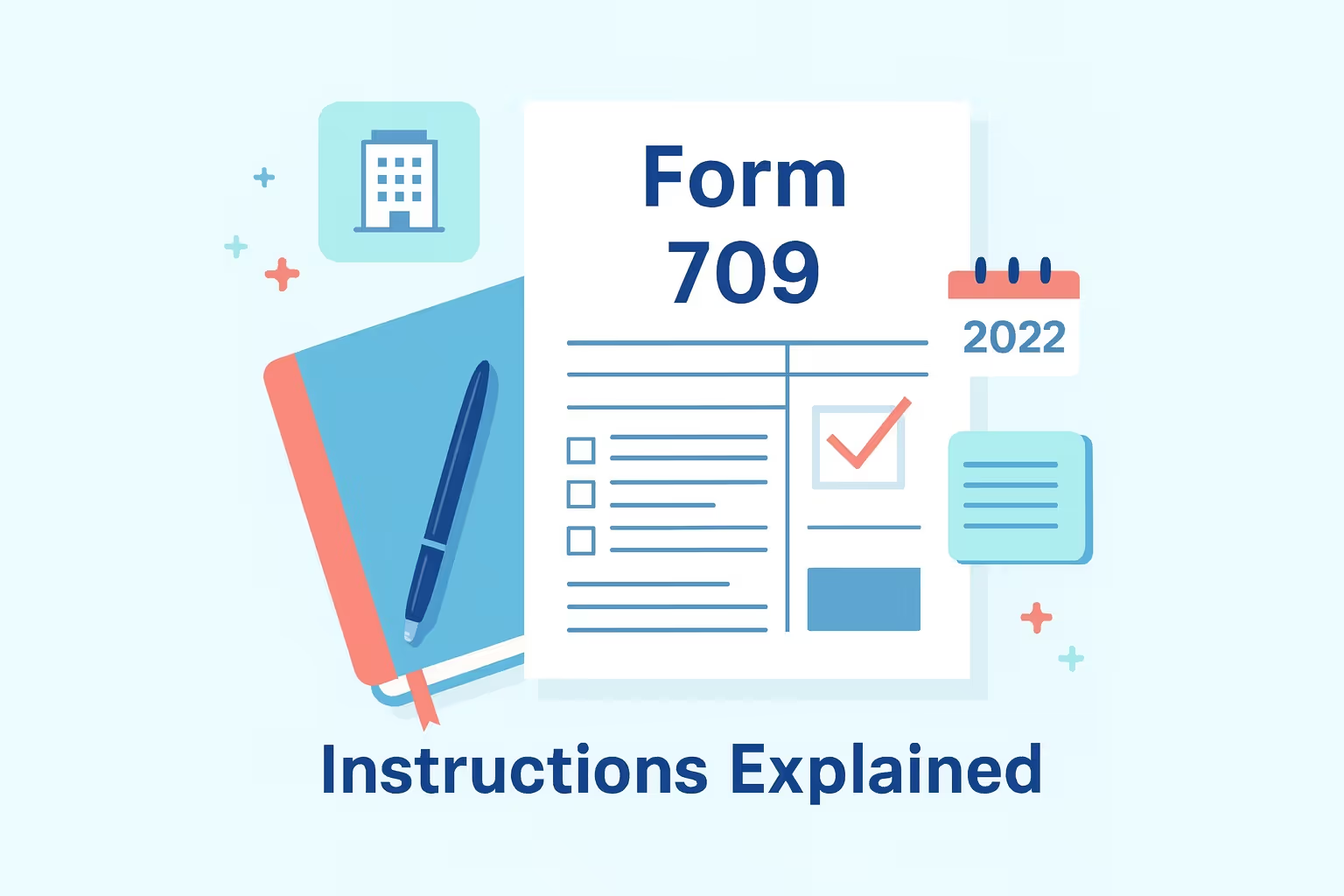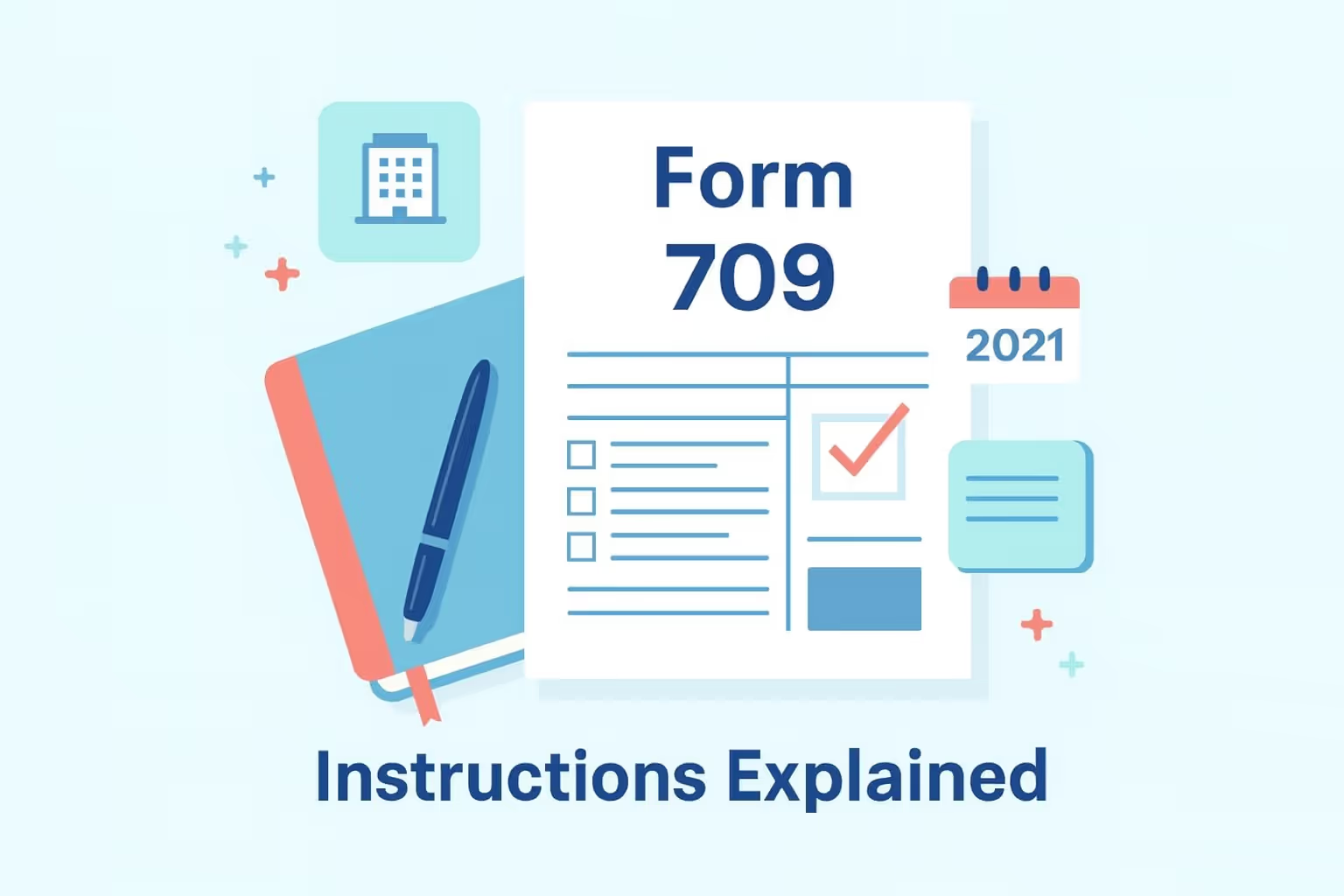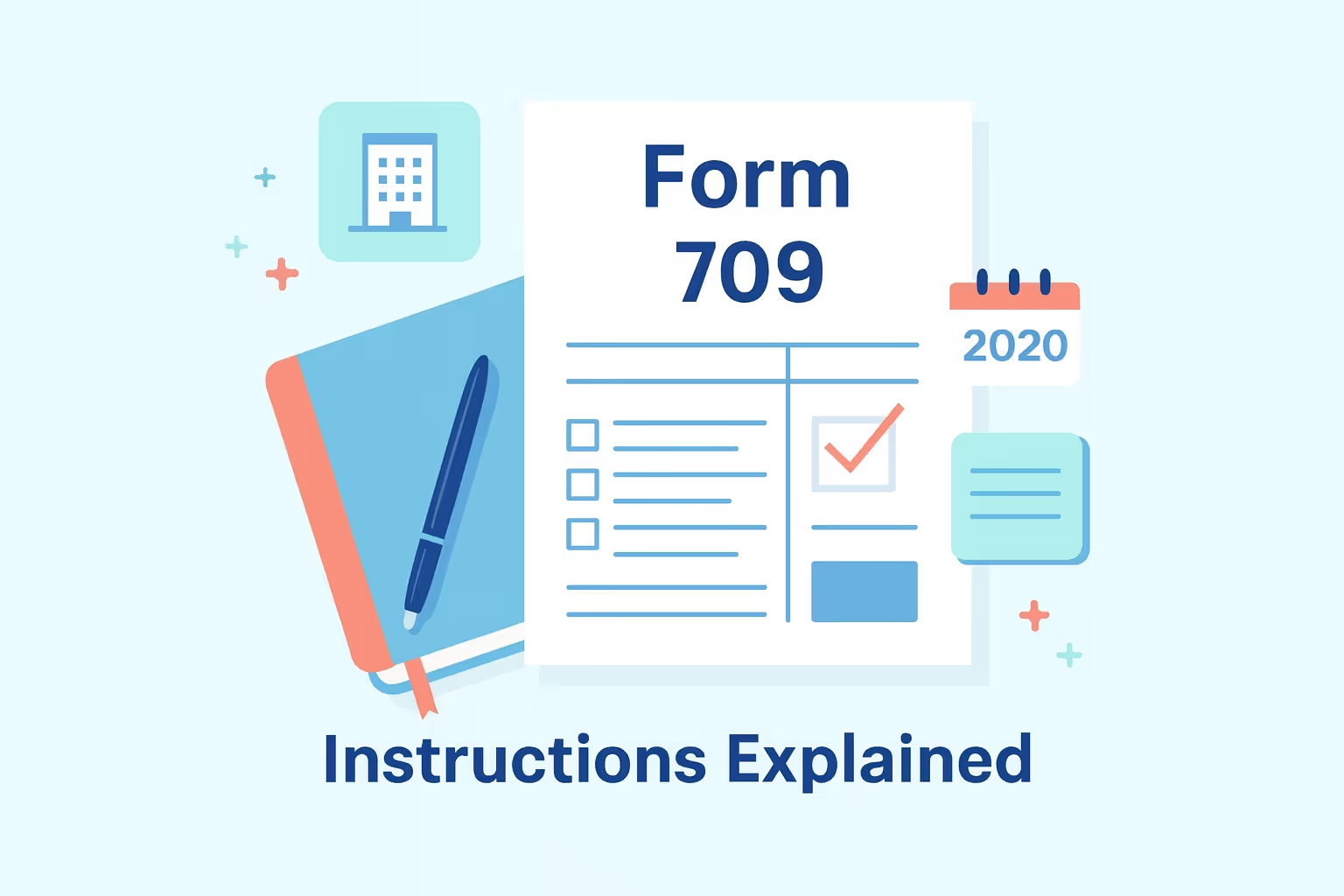How to File IRS Form 709 2012? Gift Tax Return Guide

The Internal Revenue Service requires certain taxpayers to file Form 709, the United States Gift (and Generation-Skipping Transfer) Tax Return, for gifts made during the 2012 tax year. This individual gift tax return is used to report taxable gifts, calculate any potential gift tax liability, and track lifetime gift tax exemption amounts that also impact estate tax planning. While not every gift is taxable, the federal gift tax applies to specific transfers that exceed the annual exclusion amount or involve special conditions, such as gifts of future interests.
For 2012, the annual gift tax exclusion was set at $13,000 per recipient, with a higher exclusion for gifts made to a spouse who is not a U.S. citizen. Taxpayers were also allowed to use a basic exclusion amount, commonly referred to as the lifetime exemption, which covered both gift and estate taxes. These rules ensured that only gifts exceeding certain thresholds would be subject to tax. Form 709 2012 instructions help filers determine whether they must file a gift tax return and explain how to apply deductions such as the marital deduction, charitable gift exclusions, and the deceased spousal unused exclusion.
Filing requirements can be confusing for those unfamiliar with federal tax law. For income tax purposes, Form 709 is separate from an individual income tax return and must be mailed to the United States Treasury by the annual deadline. This guide explains how to file a gift tax return for 2012, outlining the steps, schedules, and exclusions available. Readers will also learn about common mistakes to avoid, payment methods, and when to seek help from a tax professional or financial advisor.
What Is IRS Form 709?
IRS Form 709, the United States Gift (and Generation-Skipping Transfer) Tax Return, is the federal document that reports certain gifts and transfers made during a tax year. For 2012, the Internal Revenue Service required individuals to use this form to disclose taxable gifts, calculate the federal gift tax, and track the lifetime gift tax exemption tied to estate tax planning. The form also documents elections for gift splitting between spouses and reports generation-skipping transfers when applicable.
Form 709 must be filed when a taxpayer makes gifts above the annual exclusion amount or transfers that qualify as taxable gifts. These include gifts of future interests, gifts to trusts, and certain transfers that do not qualify as tax-free gifts. Although many taxpayers never owe gift tax because of the lifetime exemption and various deductions, they must still file a gift tax return in specific circumstances.
Situations that require filing Form 709 include:
- A gift to one recipient during 2012 that exceeded the annual exclusion limit of $13,000.
- Any gift of future interest, regardless of value.
- Gifts made to a spouse who is not a U.S. citizen that exceeded the exclusion of $139,000.
- An election to split gifts with a spouse requires each spouse to file a separate return.
- Gifts to grandchildren or unrelated individuals who are more than one generation younger are subject to the generation-skipping transfer tax.
Form 709 serves as both a compliance tool and a record for long-term planning. It ensures taxpayers properly apply exclusions, document lifetime gifts, and calculate potential tax liability that may later impact estate tax obligations. Even when no immediate tax is due, filing helps the Internal Revenue Service track cumulative taxable gifts for federal tax purposes.
Key 2012 Gift Tax Rules and Limits
For the 2012 tax year, several limits and exclusions determined whether gifts were subject to federal gift tax or required reporting on Form 709. These thresholds are also directly connected to estate tax planning, as lifetime exemptions cover gift and estate transfers. Understanding these numbers was crucial for determining when to file a federal gift tax return and whether any tax liability was applicable.
Important 2012 rules included:
- The annual gift tax exclusion allowed individuals to give up to $13,000 per recipient without filing requirements.
- The lifetime gift tax exemption, also called the basic exclusion amount, was set at $5.12 million.
- Gifts to a spouse who was not a U.S. citizen had a separate annual exclusion limit of $139,000.
- The maximum gift tax rate for 2012 was 35 percent.
- Generation-skipping transfers had a lifetime GST exemption equal to $5.12 million.
These limits applied to all qualifying gifts made during the year. Only gifts exceeding the annual exclusion amount, or specific gifts such as those of future interests, require filing a gift tax return.
The Internal Revenue Service used these thresholds to determine how much of a donor’s lifetime exemption had been used, which would later affect the estate tax exemption available at death.
Filing Deadlines and Requirements
Form 709 for the 2012 tax year was due on April 15, 2013. If the deadline fell on a weekend or legal holiday, the due date shifted to the next business day. Filers could not submit the return electronically for 2012; instead, the completed individual gift tax return had to be mailed to the United States Treasury.
Key filing rules included:
- Form 709 must be filed by April 15, 2013, covering all gifts made in 2012.
- Taxpayers could request an automatic six-month extension by filing Form 8892.
- Filing Form 4868 for an individual income tax return also extended the deadline for Form 709.
- An extension to the filing did not extend the time to pay the gift tax owed. Any tax liability had to be paid by the original April deadline.
- Returns had to be mailed to the IRS Service Center in Cincinnati, Ohio.
Filing requirements applied even if no tax was due. Many taxpayers needed to file a gift tax return to document gift splitting elections, utilize the annual exclusion limit, or apply the deceased spousal unused exclusion.
Step-by-Step Guide to Completing Form 709
Filing Form 709 for the 2012 tax year required a structured process. The Internal Revenue Service issued Form 709 2012 instructions to guide taxpayers in reporting taxable gifts, applying exclusions, and calculating gift tax liability. Following each step ensured proper compliance with federal gift tax rules and preserved the lifetime exemption for future estate tax purposes.
Step 1: Gather Required Information.
Taxpayers needed to prepare all relevant details before starting the return. This included personal information such as name, address, and Social Security number. Recipient names, addresses, and relationships were required. Spousal information had to be provided if gift splitting was elected. Supporting documents were also necessary, including appraisals, prior Form 709 filings, and trust agreements.
Step 2: Identify Reportable Gifts.
Not all transfers qualified as reportable. Taxpayers were required to include gifts exceeding the annual exclusion amount of $13,000, as well as gifts of future interests, gifts to trusts, and certain partial property transfers. Non-reportable transfers included tax-free gifts such as qualified charitable gifts, direct tuition costs, payments made directly to medical providers, and contributions to political organizations.
Step 3: Complete Part 1 – General Information.
Part 1 required filers to provide identifying information and election details. This section included name, address, legal residence, tax year, prior filings, gift splitting elections, and deceased spousal unused exclusion. Consent signatures were also required where applicable.
Step 4: Fill Out Schedule A – Computation of Taxable Gifts.
Schedule A was used to list each taxable gift. Filers entered the donee’s name and relationship, the description of the gift, the date of the gift, and its fair market value. Totals were calculated, annual exclusions were applied, and deductions such as the marital deduction or charitable gift exclusions were factored in.
Step 5: Complete any additional schedules as required.
- Schedule B: This should be documented before taxable gifts from earlier years.
- Schedule C: This schedule reports any deceased spousal unused exclusion that has been transferred to a surviving spouse.
- Schedule D: This was used for generation-skipping transfers and the lifetime GST exemption allocation.
Step 6: Compute Tax Liability.
Taxpayers calculated the total taxable gifts after exclusions and deductions. The applicable exclusion amount and lifetime exemption were applied to determine whether any gift tax was due. The tax rate schedule was then used to compute potential liability.
Step 7: Review, Sign, and Mail the Return.
The final step was to review all information for accuracy. Taxpayers signed the return, included required attachments such as appraisals and trust documents, and mailed the completed individual gift tax return to the United States Treasury at the IRS Service Center in Cincinnati, Ohio.
Completing Form 709 in this order helped ensure accuracy and compliance with the tax law. Even if no immediate gift tax applied, filing the return documented lifetime gifts and maintained accurate records for gift and estate tax purposes.
Payment and Processing
When completing a federal gift tax return for 2012, taxpayers also had to determine whether any gift tax liability was due. Although many individuals avoided immediate tax through the annual exclusion amount and the lifetime exemption, some situations still required payment to the Internal Revenue Service. Understanding the payment process was critical for compliance.
Accepted payment methods included:
- Check or Money Order: Payments were made payable to the United States Treasury.
- Electronic Federal Tax Payment System (EFTPS): Taxpayers could submit payments electronically through the Electronic Federal Tax Payment System.
- Phone Payments: Payments could be made by calling 1-888-PAY-1040 and following the automated instructions.
Payments had to be made by April 15, 2013, even if the taxpayer filed for an extension to submit the return. An extension applies only to filing, not to payment. Taxpayers must pay at least 90 percent of the tax due by the deadline to avoid penalties and interest.
Timely payment helped taxpayers prevent additional charges and ensured their gift and estate planning strategies remained intact. This process reinforced the importance of tracking taxable gifts and understanding how gift and estate taxes interact.
Common Mistakes to Avoid
Filing Form 709 could be complex, and the Internal Revenue Service frequently identifies recurring errors. These mistakes often delayed processing or resulted in penalties.
Frequent errors included:
- Missing filing requirements: Forgetting that gifts of future interests or elections for gift splitting must always be reported.
- Valuation issues: Using the wrong fair market value, failing to provide appraisals, or applying improper discounts.
- Mathematical errors: Miscalculating totals or incorrectly applying the applicable exclusion amount.
- Incomplete documentation: Missing signatures, omitting recipient details, or failing to include required attachments.
- Incorrect filing address: Mailing the return to the wrong IRS location.
Avoiding these errors saved time and reduced the risk of IRS inquiries. Taxpayers were encouraged to double-check their returns or consult a tax professional before mailing the completed gift tax return.
Special Filing Situations
Certain circumstances required additional care when preparing Form 709. These situations often involved elections, special deductions, or unique gift arrangements.
Key exceptional cases included:
- Gift Splitting: Married couples can elect to split gifts, effectively doubling the annual exclusion to $ 52,000 per recipient. Each spouse was required to file an individual gift tax return to document the election.
- Generation-Skipping Transfers: Gifts made to grandchildren or unrelated individuals more than one generation younger require reporting and allocating the lifetime GST exemption.
- Zero Activity Years: If no reportable gifts were made during the tax year, filing was not required. However, some taxpayers filed anyway to start the statute of limitations or preserve elections.
- First-Time Filers: Individuals filing their first gift tax return are advised to carefully read the instructions, gather necessary documentation, and consider seeking professional guidance.
Special filing situations often influenced long-term planning for both gift and estate taxes. Properly addressing them ensured compliance with the Internal Revenue Code and helped protect exemption amounts for future use.
Required Schedules and Attachments
Form 709 included several schedules to provide detailed reporting of taxable gifts and related elections. The Internal Revenue Service required these schedules when applicable, and failure to include them could result in processing delays or penalties.
Key schedules included:
- Schedule A – Computation of Taxable Gifts: All filers must list taxable gifts, apply the annual exclusion, and calculate totals.
- Schedule B – Gifts From Prior Periods: Used to report taxable gifts from previous years to ensure lifetime gift tax exemption amounts were correctly applied.
- Schedule C – Deceased Spousal Unused Exclusion (DSUE): A surviving spouse can claim and use a deceased spouse’s unused exclusion amount.
- Schedule D – Generation-Skipping Transfer Tax: Applied when gifts were subject to GST tax, requiring the lifetime GST exemption allocation.
Attachments were also required to support valuations and elections. These included appraisals for non-cash gifts, trust documents, purchase agreements, financial statements, and copies of prior filings.
Taxpayers also had to include a copy of a spouse’s Form 709 when electing gift splitting. Providing complete schedules and attachments ensured that taxable gifts were reported correctly and lifetime exemptions were accurately tracked for both gift and estate tax purposes.
Frequently Asked Questions
Do I need to file Form 709 if I gave more than the annual exclusion in 2012?
Yes, if gifts made to any one person exceeded the annual gift tax exclusion of $13,000 in the 2012 tax year, a gift tax return was required. Even if no gift tax liability arose due to the lifetime gift tax exemption, the Internal Revenue Service still required filing to document the taxable gift and properly track the use of lifetime exemption amounts for estate tax purposes.
Can my spouse and I file a joint gift tax return?
No, the Internal Revenue Service does not allow a joint gift tax return. Instead, each spouse must file an individual gift tax return when gifts made exceed the annual exclusion amount or when electing to split gifts. To use gift splitting, both spouses must agree and file separate returns, ensuring that each spouse's half of the gifts made is reported and applied adequately against their respective lifetime exemption amounts.
What types of gifts are not considered taxable gifts?
Sure, gifts are excluded from gift tax purposes and do not require filing Form 709. Examples include tax-free gifts such as direct tuition costs paid to an educational institution, direct medical payments, charitable gifts to qualifying charities, and transfers to political organizations. The Internal Revenue Code also provides a marital deduction for gifts to a U.S. citizen spouse. Only gifts outside these exclusions reduce the applicable exclusion amount.
How do lifetime gifts affect the estate tax exemption?
Lifetime gifts reported on Form 709 reduce the lifetime gift tax exemption, which is unified with the federal estate tax exemption. For 2012, the basic exclusion amount was $5.12 million. Gifts above the annual exclusion limit reduce this exemption and could increase the taxable estate later. The Internal Revenue Service used the combined record of lifetime gifts and estate value to determine overall gift and estate taxes owed.
When is it necessary to obtain an appraisal for a gift?
An appraisal is required when reporting non-cash gifts that exceed the annual exclusion amount. For federal gift tax return purposes, the Internal Revenue Service requires gifts of property, business interests, or real estate to be valued at fair market value on the date of transfer. Using proper documentation protects against disputes and ensures that taxable gifts are correctly applied against the applicable exclusion amount and lifetime exemption.
What happens if I miss the deadline to file a gift tax return?
If Form 709 is filed late, the Internal Revenue Service may impose penalties and interest. While filing late is better than not filing, failure to submit on time could affect exemption tracking and gift tax liability calculations. Taxpayers who owe taxes must pay the gift tax by the original deadline to avoid additional charges. Consulting a tax professional or financial advisor can help manage compliance with federal tax requirements.






